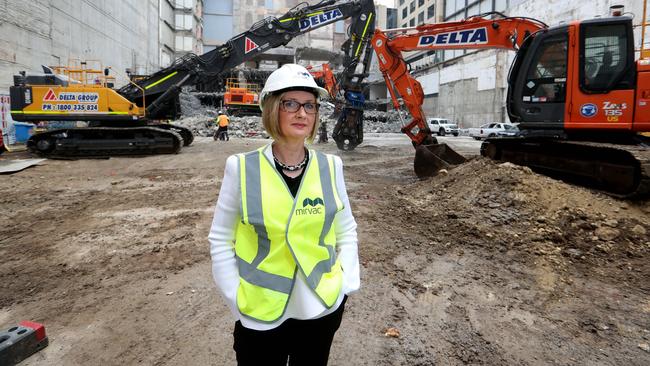Mirvac builds smart for long-term landlords
Prices for office buildings cannot continue to grow faster than the income their landlords receive, Mirvac says.

Prices for commercial office buildings cannot continue to grow faster than the income their landlords receive, according to Mirvac chief executive Susan Lloyd-Hurwitz.
It means developers will need to be smarter about how they build, to help landlords get long-term use out of the developments, as the ability of landlords to pass on rental increases diminishes.
And the next stage of value increases in the office market will be based on the income a building can produce, making it more important to own buildings that require little spending on upgrades, the boss of the $8 billion developer and landlord said.
The trends help explain why Mirvac’s new development at 477 Collins Street, in the Melbourne CBD, targets tenant health to the latest certification standards, from exercise opportunities to clean air. “It’s to do with air quality, it’s greenery inside the tenancy, it’s to do with the food that’s offered,” said Ms Lloyd-Hurwitz, explaining the target for a Platinum WELL certification.
Use of data was another emerging trend for office space. The 40-storey premium grade office development, with 58,000sq m of office and retail space, is set to be a technologically enabled building, despite retaining its Olderfleet heritage facade built in the 1880s. A better understanding of how a building was used could help with adjusting the air quality or structuring tenants’ workplaces, said Ms Lloyd-Hurwitz.
Well-designed office buildings could also help tenants win the war for talent, she said, citing Mirvac’s 8 Chifley building at 8 Chifley Square in Sydney.
“Our anchor tenant there, (law firm) Corrs, said that their ability to recruit the top level graduates coming out of law school shot up when they moved into 8 Chifley because people wanted to work in that building,” Ms Lloyd-Hurwitz said.
The comments come after a period of upward revaluations and fully priced sales in the office market. Capitalisation rates for Australian real estate investment trusts compressed 23 basis points over the six months to December, according to analysis of February’s reporting season by CLSA.
Some groups presenting at a recent Macquarie conference expect further tightening, including Dexus and Charter Hall Group. A NAB survey last month found participants expected stronger capital growth in the office space than they did three months ago.
“The era of major cap rate compression is definitely coming to an end,” Ms Lloyd-Hurwitz told The Australian after a sod-turning ceremony for a new office building in Melbourne.
“Value increases are going to be driven by income over this next stage of the investment cycle, and that’s why it’s important to have a young office portfolio with low capex.
“And to have a young office portfolio that offers the type of space that tenants want to be in, because the retention of income is going to be the driver of growth in valuation going forward in our view.”
Deloitte will be the anchor tenant for the Grimshaw Architects-designed Olderfleet tower, signing up for 22,000sq m of office space for 12 years from 2020.



To join the conversation, please log in. Don't have an account? Register
Join the conversation, you are commenting as Logout